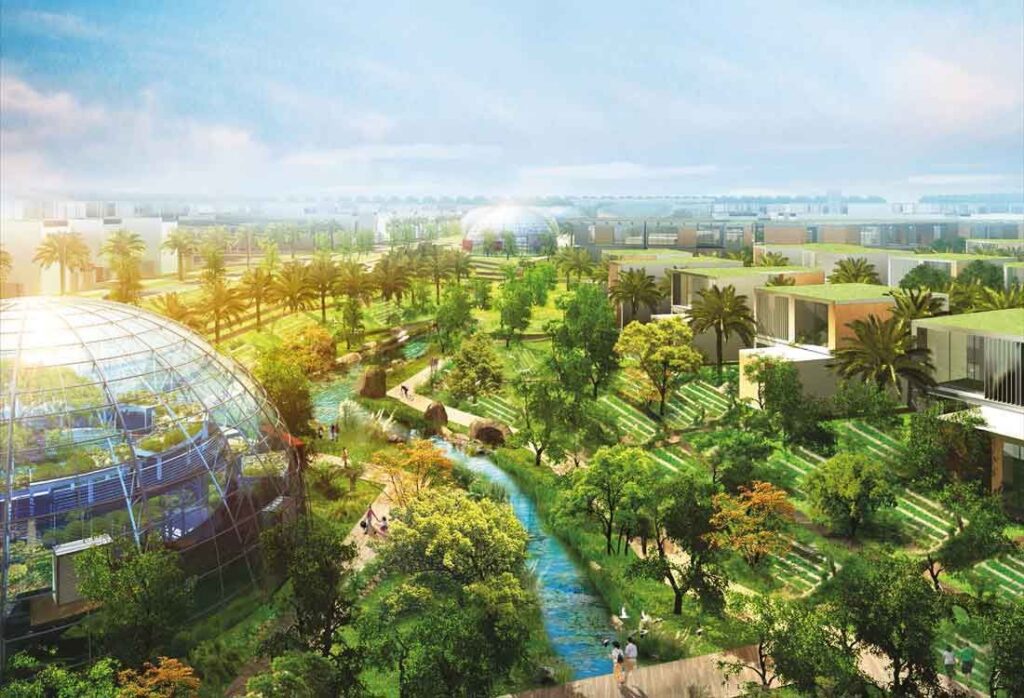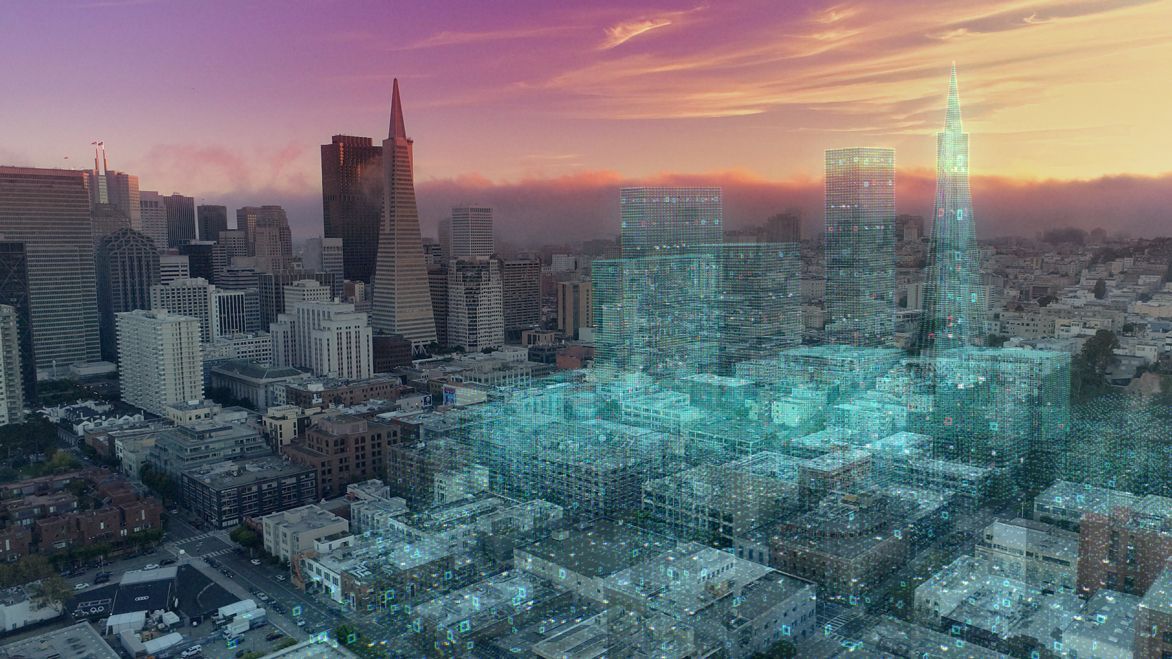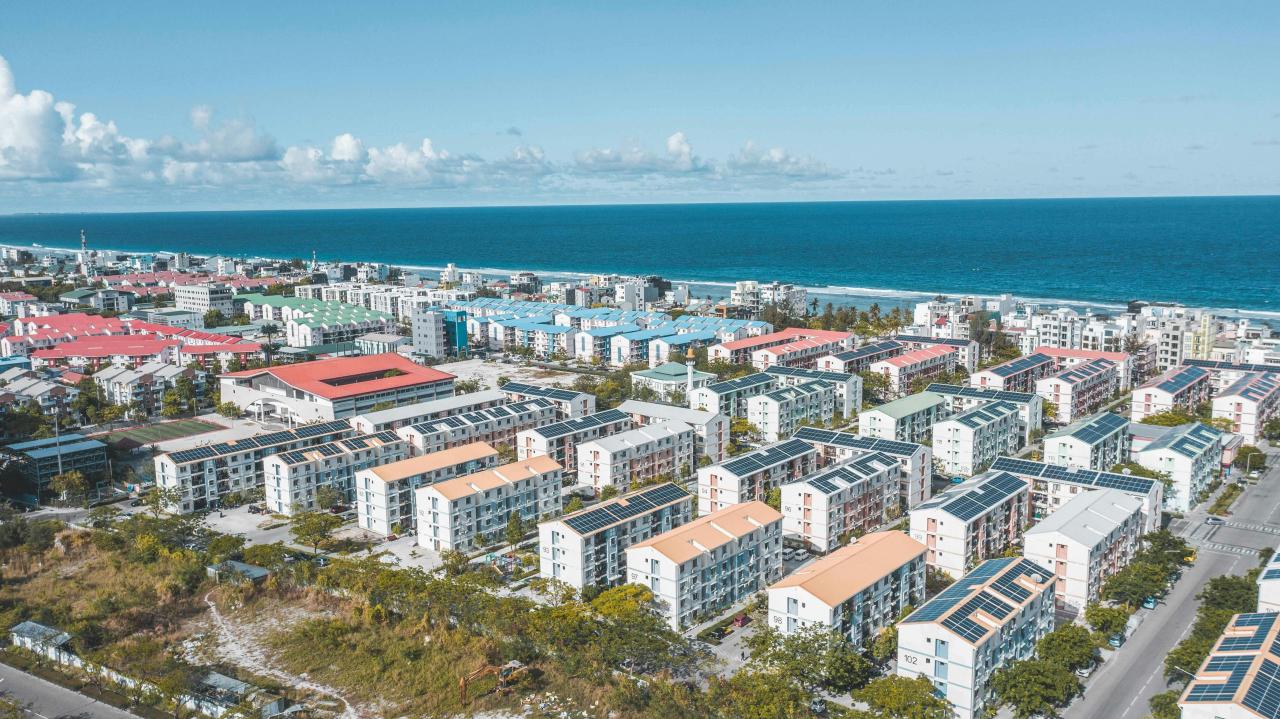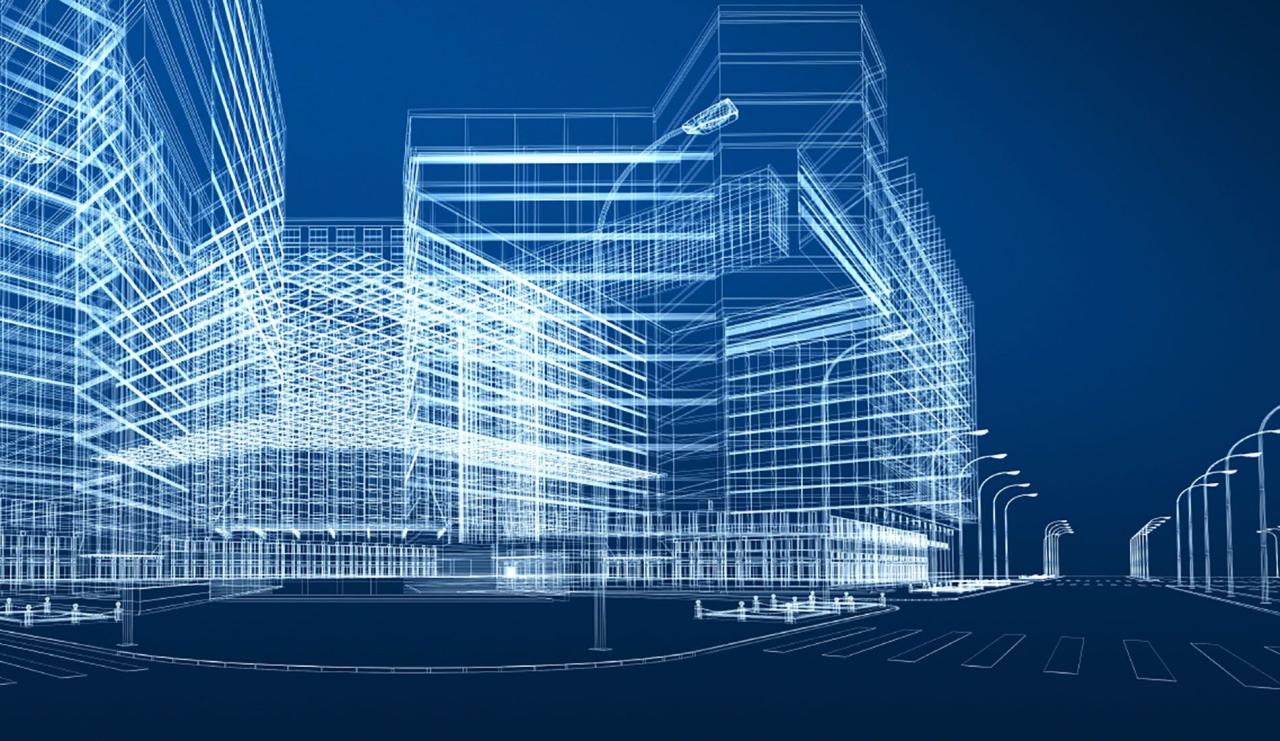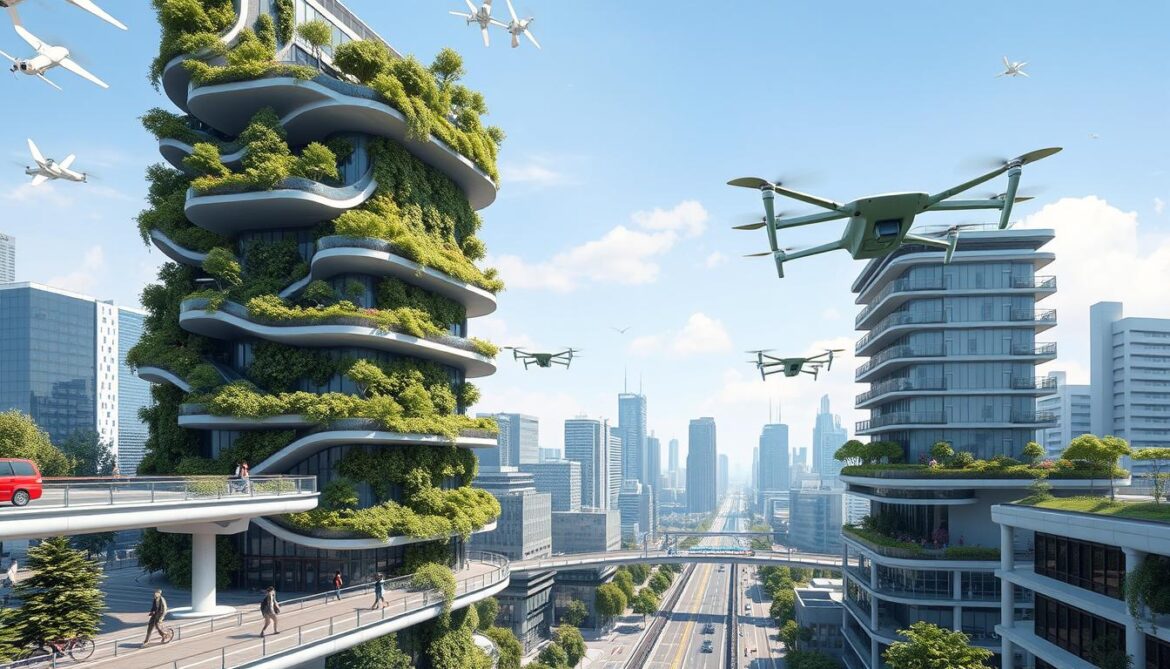The concept of a smart city is rapidly evolving from futuristic vision to tangible reality, reshaping urban landscapes across the globe. It’s a transformative approach to urban development that leverages advanced technologies and interconnected systems to enhance the quality of life for residents, optimize city operations, and promote sustainable growth. Far more than just adding sensors to streetlights, a smart city integrates digital technology, the Internet of Things (IoT), artificial intelligence (AI), and data analytics into the very fabric of urban infrastructure and services. This holistic integration aims to create environments that are more efficient, greener, safer, and ultimately more responsive to the needs of their inhabitants, truly becoming the living spaces of tomorrow.
The Genesis of Smart Cities: Addressing Urban Challenges
To fully grasp the critical importance and complex nature of smart cities, we must first understand the burgeoning challenges that contemporary urban centers face. Rapid urbanization, coupled with technological advancements, has created an urgent need for intelligent, sustainable solutions.
A. The Unprecedented Pace of Urbanization
The 21st century is undeniably the century of cities. Humanity is experiencing an unprecedented pace of urbanization, with more than half of the world’s population already residing in urban areas, a figure projected to reach nearly 70% by 2050. This massive influx into cities places immense strain on existing infrastructure and resources.
- Overburdened Infrastructure: Existing transportation networks, public utilities (water, electricity, waste management), and public services (healthcare, education) are struggling to cope with burgeoning populations. This leads to chronic issues like traffic congestion, power outages, water shortages, and inadequate public services.
- Environmental Degradation: Densely populated urban centers are major contributors to environmental problems. Increased energy consumption, industrial activity, and vehicular emissions result in severe air and water pollution, exacerbating climate change and impacting public health.
- Resource Scarcity: As urban populations swell, the demand for finite resources like clean water, energy, and land escalates dramatically. Efficient resource management and sustainable practices become critical to avert crises.
- Social and Economic Disparities: Rapid growth can often exacerbate social inequalities. Housing affordability, access to employment, and equitable distribution of public services become significant challenges, potentially leading to social unrest and reduced quality of life for vulnerable populations.
B. The Promise of Technology: A New Urban Frontier
Against the backdrop of these formidable challenges, advancements in digital technology began to offer a glimmer of hope. The concept of leveraging technology to address urban problems started to take shape, leading to the early foundations of the smart city movement.
- Ubiquitous Connectivity: The proliferation of broadband internet, Wi-Fi networks, and cellular technologies (3G, 4G, and now 5G) provides the essential backbone for connecting devices, sensors, and people across the urban environment. This pervasive connectivity enables real-time data flow.
- The Internet of Things (IoT) Revolution: Miniaturized, low-cost sensors capable of collecting vast amounts of data about the physical world (traffic flow, air quality, waste levels, energy consumption) have become ubiquitous. These IoT devices are the ‘eyes and ears’ of a smart city, generating the raw data needed for intelligent decision-making.
- Big Data and Analytics Capabilities: The ability to collect, store, process, and analyze massive datasets (Big Data) has matured significantly. Advanced analytics, including machine learning and artificial intelligence, can extract actionable insights from this data, moving beyond mere observation to predictive and prescriptive actions.
- Cloud Computing as an Enabler: Cloud infrastructure provides the scalable, flexible, and cost-effective compute and storage resources required to handle the enormous data volumes and complex analytical workloads generated by smart city initiatives. It allows cities to build intelligent systems without massive upfront IT investments.
This convergence of urban challenges and technological capabilities has created fertile ground for the development and widespread adoption of smart city concepts, moving from fragmented tech implementations to integrated urban ecosystems.
Foundational Pillars: Defining a True Smart City
A genuine smart city is built upon several interconnected foundational pillars, each contributing to its overall intelligence, efficiency, and livability. It’s a holistic ecosystem, not just a collection of smart gadgets.
A. Smart Governance and Citizen Engagement
At its core, a smart city requires smart governance, characterized by transparent, participatory, and data-driven decision-making. This pillar emphasizes leveraging technology to improve public administration and foster active citizen involvement.
- Digital Public Services: Offering government services online (e-permitting, license applications, tax payments) enhances accessibility and efficiency for citizens, reducing bureaucratic hurdles.
- Open Data Initiatives: Publishing non-sensitive city data in open, machine-readable formats empowers citizens, researchers, and businesses to develop their own applications and insights, fostering innovation and transparency.
- Citizen Engagement Platforms: Utilizing mobile apps, social media, and dedicated online portals to facilitate two-way communication between citizens and city officials. This allows for real-time feedback on urban issues (e.g., reporting potholes, requesting services) and promotes civic participation in urban planning.
- Performance Dashboards: Implementing data-driven dashboards for city officials to monitor key performance indicators (KPIs) related to urban services, resource consumption, and public safety, enabling evidence-based policy formulation.
B. Smart Economy and Innovation
A smart city actively fosters an innovative and competitive economy by creating an environment conducive to technological advancement, entrepreneurship, and job creation.
- Digital Infrastructure for Business: Providing ubiquitous high-speed internet, smart industrial zones, and collaborative co-working spaces to attract tech companies and startups.
- Support for Innovation Ecosystems: Establishing incubators, accelerators, and partnerships between academia, industry, and government to drive research and development in smart city technologies.
- Talent Development: Investing in education and vocational training programs focused on digital skills, data science, and urban technologies to build a future-ready workforce.
- E-commerce and Digital Services: Promoting digital platforms for local businesses and services, integrating smart logistics and payment systems to boost economic activity and efficiency.
C. Smart Environment and Sustainability
Central to the smart city ethos is a commitment to environmental stewardship and sustainable resource management. This pillar leverages technology to minimize ecological footprint and enhance urban resilience to climate change.
- Smart Energy Grids: Implementing advanced metering infrastructure (AMI), demand-response systems, and renewable energy integration to optimize energy consumption, reduce waste, and enhance grid stability.
- Smart Waste Management: Deploying IoT sensors in waste bins to monitor fill levels, optimizing collection routes, and promoting recycling initiatives. This reduces operational costs and environmental impact.
- Air and Water Quality Monitoring: Utilizing networks of environmental sensors to provide real-time data on air pollution levels, water quality, and noise, enabling rapid response to environmental hazards and informing public health policies.
- Sustainable Transportation: Promoting electric vehicles (EV) infrastructure, smart traffic management (optimizing traffic flow, reducing idle times), and public transport optimization to reduce emissions and congestion.
- Urban Green Spaces and Biodiversity: Using data to manage urban parks, water usage for irrigation, and monitor urban biodiversity, enhancing the ecological health of the city.
D. Smart Mobility and Transportation
Efficient and sustainable transportation systems are vital for a city’s economic vitality and residents’ quality of life. Smart mobility solutions leverage technology to optimize movement of people and goods.
- Intelligent Traffic Management Systems: Using sensors, cameras, and AI to monitor traffic conditions in real-time, adjust traffic light timings dynamically, and provide predictive traffic information to commuters, significantly reducing congestion.
- Integrated Public Transport: Developing unified ticketing systems, real-time bus/train tracking apps, and optimizing public transport routes based on demand patterns, making public transit more attractive and efficient.
- Smart Parking Solutions: Deploying sensors to identify available parking spaces, guiding drivers to open spots via mobile apps, and enabling automated payments, reducing search time and congestion.
- Electric Vehicle (EV) Infrastructure: Strategically placing EV charging stations and integrating them with the smart grid to support the transition to sustainable transport.
- Micromobility Integration: Seamlessly incorporating shared bikes, e-scooters, and ride-hailing services into the urban transport fabric, providing diverse mobility options.
E. Smart Living and Public Safety
The ultimate goal of a smart city is to improve the quality of life and enhance public safety for its residents. This pillar focuses on leveraging technology to create healthier, safer, and more vibrant communities.
- Smart Healthcare: Utilizing telemedicine platforms, wearable health devices, and data analytics to improve healthcare access, preventive care, and emergency response times.
- Public Safety and Emergency Response: Deploying smart surveillance cameras with AI-powered anomaly detection, gunshot detection systems, and integrated emergency communication networks to enhance crime prevention and accelerate response times for police, fire, and medical services.
- Community Engagement and Social Inclusion: Using digital platforms to foster community building, provide access to educational resources, and bridge digital divides, ensuring technology benefits all segments of the population.
- Smart Buildings and Homes: Integrating IoT devices in residential and commercial buildings for optimized energy consumption, smart climate control, enhanced security, and improved comfort.
Core Technologies Enabling Smart Cities
The realization of a smart city relies heavily on the synergistic interplay of several advanced technological components. These are the engines that power the intelligence of urban environments.
A. Internet of Things (IoT)
The Internet of Things (IoT) forms the sensory nervous system of a smart city. It encompasses a vast network of interconnected physical devices embedded with sensors, software, and other technologies that enable them to connect and exchange data over the internet.
- Sensor Networks: Thousands to millions of sensors deployed across the city:
- Environmental Sensors: Monitoring air quality (PM2.5, CO2, ozone), temperature, humidity, noise pollution in real-time.
- Traffic Sensors: Detecting vehicle counts, speed, congestion, and parking availability.
- Utility Sensors: Monitoring water pipe leaks, electricity consumption, gas leaks, and waste bin fill levels.
- Structural Health Sensors: Embedded in bridges, buildings to monitor integrity and detect potential issues.
- Data Collection and Transmission: IoT devices continuously collect data, which is then transmitted via various communication protocols (Wi-Fi, LoRaWAN, NB-IoT, 5G) to central platforms for processing.
- Actuators: Many IoT devices aren’t just sensors; they are also actuators that can perform actions (e.g., smart streetlights adjusting brightness, smart irrigation systems turning on/off).
B. Big Data and Advanced Analytics
The sheer volume, velocity, and variety of data generated by IoT devices and city operations constitute Big Data. To derive meaningful insights from this deluge, advanced analytics are indispensable.
- Data Ingestion and Storage: Cloud-based data lakes and scalable databases are crucial for ingesting and storing petabytes of structured and unstructured urban data.
- Predictive Analytics: Using historical data and machine learning algorithms to forecast future trends, such as traffic congestion patterns, energy demand, or potential crime hotspots. This enables proactive management.
- Prescriptive Analytics: Going beyond prediction to recommend specific actions. For example, suggesting optimal routes for emergency services or dynamic adjustments to public transport schedules.
- Real-time Processing: Streaming analytics platforms process data as it arrives, enabling immediate responses to events (e.g., detecting an accident, identifying a sudden power surge).
C. Artificial Intelligence (AI) and Machine Learning (ML)
AI and Machine Learning are the ‘brains’ of the smart city, enabling systems to learn from data, make intelligent decisions, and automate complex processes.
- Traffic Optimization: AI algorithms analyze real-time traffic data to dynamically adjust traffic light timings, optimize route guidance for vehicles, and manage congestion more effectively.
- Predictive Maintenance: ML models predict failures in infrastructure components (e.g., water pipes, streetlights, public transport vehicles) based on sensor data, enabling proactive maintenance and reducing downtime.
- Public Safety: AI-powered video analytics can detect anomalies (e.g., unusual crowd behavior, abandoned packages), identify patterns in crime data, and enhance facial recognition for security purposes (with ethical considerations).
- Resource Management: AI optimizes energy consumption in buildings, water distribution systems, and waste collection routes, leading to significant efficiencies.
- Chatbots and Virtual Assistants: AI-powered conversational interfaces provide instant access to city services and information for citizens.
D. Cloud Computing
Cloud computing provides the scalable, flexible, and cost-effective infrastructure that is absolutely essential for housing and processing the vast amounts of data and running the complex analytical and AI workloads of a smart city.
- Scalable Infrastructure: Cloud platforms offer elastic compute, storage, and networking resources that can scale up or down based on demand, avoiding the need for massive upfront hardware investments.
- Managed Services: Cloud providers offer a wide array of managed services (databases, IoT platforms, AI/ML services, data analytics platforms) that simplify development and operations, allowing cities to focus on solutions rather than infrastructure management.
- Global Reach and Low Latency: Cloud regions and edge locations allow cities to deploy services closer to their citizens, reducing latency and improving responsiveness.
- Data Lakes and Warehouses: Cloud-based data lakes and data warehouses provide the centralized, scalable repositories for all urban data, forming the backbone for analytics and AI.
E. High-Speed Connectivity (5G, Fiber Optics)
Robust and pervasive high-speed connectivity forms the critical nervous system that links all smart city components.
- 5G Networks: Offer ultra-low latency, massive connectivity (supporting billions of IoT devices), and extremely high bandwidth, making it ideal for real-time applications like autonomous vehicles, drone delivery, and high-definition video surveillance.
- Fiber Optics: Provides the high-capacity backbone for data centers and critical city infrastructure, ensuring reliable and fast data transfer.
- LoRaWAN/NB-IoT: Low-power, wide-area networks optimized for low-bandwidth IoT devices, providing cost-effective connectivity for sensors over long distances with minimal battery consumption.
F. Digital Twins
A Digital Twin is a virtual replica of a physical object, process, or system. In the context of smart cities, it’s a dynamic, virtual model of an entire urban area or critical infrastructure (e.g., a building, a bridge, a traffic network).
- Real-time Simulation: Data from real-world sensors feeds into the digital twin, allowing it to accurately reflect the current state of the city.
- Scenario Planning: City planners can use the digital twin to simulate the impact of urban development projects, policy changes, or disaster scenarios before implementing them in the physical world.
- Predictive Maintenance: By analyzing historical and real-time data within the twin, potential failures in infrastructure can be predicted.
- Optimized Operations: Digital twins can optimize energy consumption, traffic flow, and resource allocation by running simulations and identifying the most efficient configurations.
Challenges and Ethical Considerations in Smart City Development
While the potential of smart cities is immense, their development is not without significant challenges and crucial ethical considerations that must be carefully addressed.
A. Data Privacy and Security Concerns
The core of a smart city is data, much of which can be sensitive. Protecting this data and ensuring privacy is paramount.
- Mass Surveillance Risks: The extensive deployment of cameras and sensors raises concerns about mass surveillance and potential misuse of data by governments or malicious actors.
- Cybersecurity Vulnerabilities: Interconnected IoT devices, urban networks, and centralized data platforms create a vast attack surface, making smart cities susceptible to cyberattacks that could cripple critical infrastructure or compromise personal data.
- Anonymization and De-identification: Ensuring that collected data is properly anonymized and de-identified to protect individual privacy while still allowing for meaningful analytics is a complex technical and ethical challenge.
B. Digital Divide and Social Equity
Smart city initiatives often involve significant technological adoption, which can exacerbate existing social inequalities.
- Access to Technology: Not all citizens have equal access to high-speed internet, smartphones, or the digital literacy required to fully utilize smart city services. This creates a digital divide.
- Exclusion of Vulnerable Populations: If services primarily migrate online, populations without digital access or skills (e.g., elderly, low-income communities) may be excluded from essential city services and opportunities.
- Algorithmic Bias: AI algorithms used in smart city applications (e.g., for policing, resource allocation) can inadvertently perpetuate or amplify existing societal biases if not carefully designed and trained on diverse, representative data.
C. Funding and Investment Barriers
Building a smart city requires substantial, long-term financial commitment, which can be a significant hurdle for many municipalities.
- High Initial Costs: The upfront investment in sensors, networks, data platforms, and skilled personnel can be prohibitive for cities with limited budgets.
- Return on Investment (ROI) Measurement: Quantifying the exact ROI for smart city projects can be challenging, making it difficult to secure funding and justify expenditures.
- Public-Private Partnerships (PPPs): While essential for funding, navigating the complexities of PPPs, including intellectual property rights and revenue sharing models, can be difficult.
D. Interoperability and Standardization Issues
Smart city solutions often involve integrating diverse technologies from multiple vendors, leading to interoperability challenges.
- Proprietary Systems: Many vendors offer proprietary solutions that do not easily integrate with other systems, leading to vendor lock-in and fragmented data.
- Lack of Common Standards: The absence of widely adopted open standards for data formats, communication protocols, and API interfaces complicates the integration of different smart city components and limits scalability.
- Data Silos: Despite the goal of integration, data often remains siloed within different city departments or vendor systems, hindering holistic insights and cross-functional optimizations.
E. Governance and Regulatory Frameworks
Developing appropriate legal and regulatory frameworks to govern smart city technologies, particularly concerning data usage, AI ethics, and citizen rights, lags behind technological advancements.
- Evolving Regulations: Laws regarding data privacy, autonomous systems, and IoT security are still evolving and vary significantly across jurisdictions, creating a complex regulatory landscape.
- Ethical Oversight: Establishing clear ethical guidelines and oversight mechanisms for the deployment of AI and surveillance technologies in public spaces is crucial to maintain public trust and prevent dystopian outcomes.
- Public Acceptance: Gaining and maintaining public trust and acceptance for smart city initiatives, especially those involving data collection and surveillance, requires transparent communication, robust privacy protections, and clear demonstrations of public benefit.
Best Practices for Designing and Implementing Smart Cities
To navigate the complexities and maximize the benefits of smart city development, adhering to a set of best practices is crucial. These guidelines focus on strategic planning, stakeholder engagement, and responsible technology adoption.
A. Adopt a Citizen-Centric Approach
At the heart of every smart city initiative should be the citizen. Design solutions that genuinely address the needs and pain points of residents. Conduct extensive public consultations, surveys, and participatory workshops to understand community priorities. Technology should be a means to an end – improving livability, convenience, and safety – not an end in itself. Prioritize projects that deliver tangible benefits to everyday citizens.
B. Start Small, Think Big, and Scale Incrementally
Resist the temptation for a ‘big bang’ approach. Instead, start with manageable pilot projects that address specific urban challenges (e.g., smart parking in a particular district, intelligent waste collection in a neighborhood). Learn from these initial implementations, gather data, measure impact, and then iterate and scale incrementally across the city. This phased approach reduces risk, builds confidence, and allows for adaptation based on real-world feedback.
C. Foster Strong Public-Private Partnerships (PPPs)
Given the immense scale and complexity of smart city projects, strong public-private partnerships are often essential for securing funding, leveraging technological expertise, and accelerating deployment. Cities should collaborate with tech companies, startups, academia, and local businesses. Clearly define roles, responsibilities, intellectual property rights, and revenue-sharing models within these partnerships to ensure mutual benefit and long-term sustainability.
D. Prioritize Data Governance, Privacy, and Security by Design
Recognizing that data is the lifeblood of a smart city, establish robust data governance frameworks from the outset. Implement privacy by design and security by design principles into every smart city solution. This includes:
- Granular Access Controls: Limiting data access to authorized personnel only.
- Data Encryption: Encrypting sensitive data both at rest and in transit.
- Anonymization Techniques: Employing advanced techniques to anonymize and aggregate data to protect individual identities.
- Regular Security Audits: Conducting frequent vulnerability assessments and penetration testing.
- Ethical AI Guidelines: Developing clear guidelines for the responsible and ethical use of AI in public spaces.
- Transparency: Being transparent with citizens about what data is collected, how it’s used, and for what purpose.
E. Embrace Open Standards and Interoperability
To avoid vendor lock-in and facilitate seamless integration, strongly advocate for and adopt open standards, open APIs, and open data formats. Design for interoperability between different smart city systems and technologies. This allows cities to mix and match solutions from various vendors, fosters a competitive marketplace, and ensures the long-term flexibility and scalability of the urban digital infrastructure.
F. Cultivate a Data-Driven Culture and Expertise
Build the internal capacity within city administration to effectively utilize data. This includes:
- Investing in Data Literacy: Training city staff across departments on data analytics and evidence-based decision-making.
- Hiring Data Scientists and Analysts: Bringing in specialized expertise to manage and interpret urban data.
- Establishing Data Platforms: Creating centralized data platforms or data lakes that break down data silos and enable cross-departmental insights.
G. Ensure Inclusivity and Digital Equity
Actively work to bridge the digital divide and ensure that smart city benefits are accessible to all residents, regardless of socioeconomic status, age, or disability. This involves:
- Public Access Points: Providing free public Wi-Fi in underserved areas.
- Digital Literacy Programs: Offering training programs to enhance digital skills.
- Multichannel Service Delivery: Ensuring that essential city services are available through multiple channels (online, mobile, in-person) to cater to diverse needs.
- Participatory Design: Involving diverse community groups in the design and feedback processes to ensure solutions meet the needs of all citizens.
H. Build for Resilience and Scalability
Design the underlying technology infrastructure for resilience and scalability. Leverage cloud computing’s elasticity to handle fluctuating data volumes and demands. Implement redundant systems, disaster recovery plans, and cybersecurity measures to ensure continuous operation of critical services even during outages or attacks. The infrastructure itself must be as smart as the services it supports.
I. Establish Clear Governance and Regulatory Frameworks
Proactively develop and implement clear governance structures and regulatory frameworks for smart city initiatives. This includes policies on data ownership, privacy, ethical use of AI, vendor accountability, and service level agreements. A robust legal and ethical foundation builds public trust and ensures responsible technological deployment.
The Future Trajectory of Smart Cities
The journey of smart cities is still in its nascent stages, with rapid advancements and evolving priorities shaping its future trajectory. We can anticipate several key trends that will define tomorrow’s living spaces.
A. Hyper-Personalized Urban Experiences
As data collection and AI capabilities advance, future smart cities will move towards offering highly personalized urban experiences. This could include dynamic public transport routes adapting to individual needs, localized real-time information relevant to a resident’s immediate surroundings, and even AI-powered personalized public health advisories or recommendations for community engagement, all while upholding strict privacy standards.
B. Autonomous Systems Integration (Vehicles, Drones)
The integration of autonomous systems will become more pervasive. Self-driving public transport (buses, taxis), autonomous delivery drones, and robotic services for infrastructure maintenance or waste collection will reshape urban logistics and service delivery. This necessitates robust digital infrastructure, advanced mapping, and sophisticated AI for safe and efficient operation within complex urban environments.
C. Greater Emphasis on Climate Resilience and Circular Economy
Beyond basic sustainability, future smart cities will heavily focus on climate resilience (designing infrastructure to withstand extreme weather events) and implementing principles of the circular economy. This involves designing systems for waste reduction, resource recovery, and maximizing the lifespan of products and infrastructure, with technology facilitating material tracking, intelligent recycling, and resource optimization.
D. Digital Twins as Operational Brains
The concept of a Digital Twin will evolve from a simulation tool to the central operational brain of the city. Real-time data from millions of sensors will feed into the twin, allowing city operators to monitor, analyze, predict, and control urban systems with unprecedented precision. This virtual replica will enable hyper-efficient resource allocation, proactive problem-solving, and continuous optimization of every facet of urban life.
E. Human-AI Collaboration in Urban Planning
Future urban planning will increasingly involve human-AI collaboration. AI tools will analyze vast datasets to identify optimal urban designs, predict the social and environmental impact of development projects, and generate alternative solutions. Human planners will then use these AI-generated insights to make more informed, equitable, and sustainable decisions, augmenting human creativity with computational power.
F. Hyper-Local and Community-Driven Smart Initiatives
While large-scale city-wide initiatives continue, there will be a growing trend towards hyper-local and community-driven smart initiatives. Empowered by open data and accessible IoT platforms, neighborhoods and local communities will implement their own tailored smart solutions for local energy grids, community gardens, local mobility, and social services, fostering a more bottom-up approach to urban intelligence.
G. Advanced Cybersecurity and Quantum-Resistant Infrastructure
As cities become more digitized, the threat of cyberattacks will escalate. Future smart cities will require significantly more advanced cybersecurity frameworks, including quantum-resistant encryption, AI-driven threat detection, and robust, self-healing network defenses to protect critical infrastructure from sophisticated attacks.
H. Blended Physical and Digital Spaces (Metaverse-like Experiences)
We may see a blurring of physical and digital urban spaces. Augmented Reality (AR) and Mixed Reality (MR) experiences could overlay digital information onto physical environments, assisting navigation, providing real-time information, or creating interactive public art. This could lead to ‘metaverse-like’ urban experiences that enhance citizen engagement and tourism.
Conclusion
The journey towards creating smart cities is a complex yet profoundly necessary undertaking. It transcends mere technological adoption, embodying a holistic vision for more livable, sustainable, and resilient urban environments. By strategically integrating technologies like IoT, AI, Big Data, and cloud computing, cities can move beyond simply reacting to urban challenges towards proactively shaping their future.
While the path is fraught with challenges—from ensuring data privacy and addressing the digital divide to securing adequate funding and fostering interoperability—these are surmountable hurdles. By adopting a citizen-centric approach, leveraging public-private partnerships, prioritizing security and ethics by design, and embracing incremental development, cities can responsibly harness the immense power of technology. The future urban landscape will be defined by intelligent infrastructure, data-driven governance, and engaged communities, ultimately crafting living spaces that are truly optimized for the prosperity and well-being of their inhabitants. The blueprint for tomorrow’s city is being drawn today, and it is undoubtedly a smart one.

